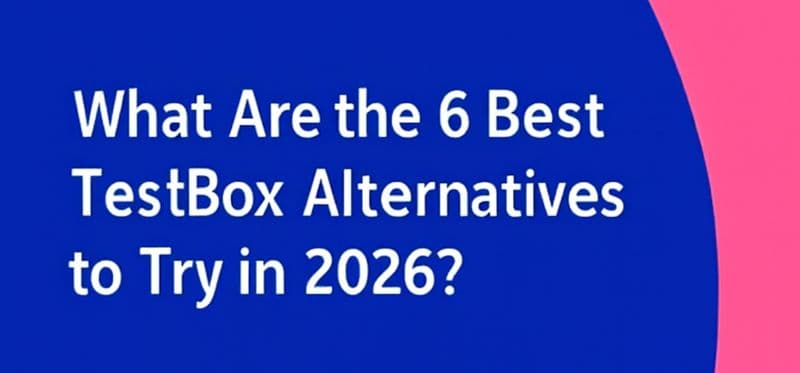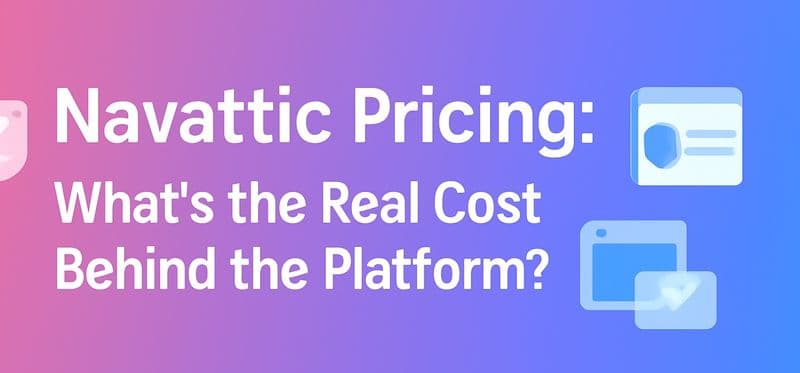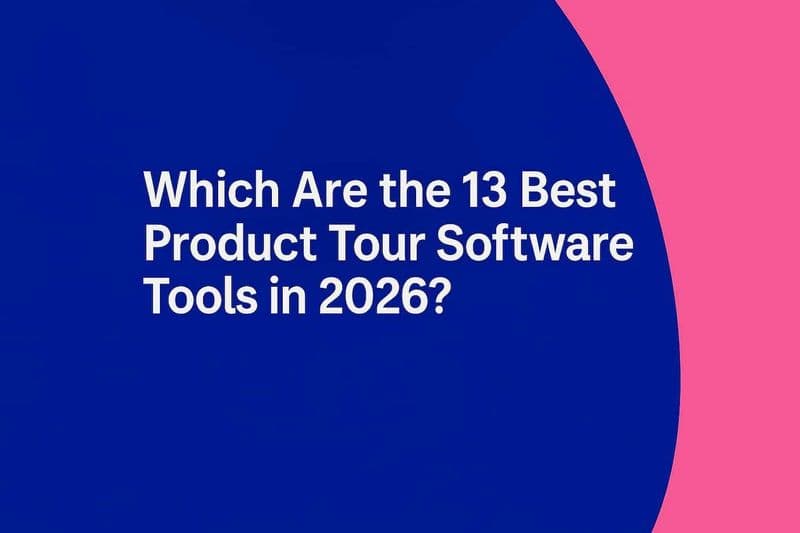
Key Highlights
|
“Another sales deck? Great. Just what I needed,” said no buyer ever.
Today’s prospects don’t want a perfectly rehearsed pitch; they want to see your product actually solve their problem, preferably before their coffee gets cold.
That’s where presales enablement makes things easy-peasy for you.
It’s not about flooding inboxes with one-pagers or cramming your sales team with more talk tracks. It’s about equipping your presales team to turn skeptical buyers into believers with proof, not promises.
In other words: if sales enablement is the hype, presales enablement is the mic-drop.
First off, let's start with getting to know presales enablement and why exactly you need to implement it.
What Exactly Is Presales Enablement, and Why Is It Important for Sales Teams?
Presales enablement is the structured process of giving presales teams the tools, training, content, and frameworks they need to:
Understand customer pain points in depth,
Translate product features into real-world solutions,
Deliver tailored demos, proof-of-concepts, and technical validations,
And support sales reps in moving deals from evaluation to close.
A Medium article suggests that strong presales capabilities can boost conversion rates by 5 points, increase revenue by 6–13%, and cut your sales cycle by up to 20%.
Think about it: an optimized presales engine, powered by tools that automate proposals, nurture leads, and deliver actionable insights, drives more revenue than just stuffing your pipeline with extra leads.
In fact, top-tier presales teams hit 40–50% win rates on new deals and up to 90% on renewals. That means out of 10 prospects, 5 can become closed deals before your coffee gets cold.
What Is The Presales vs Sales Enablement Difference?
Sales enablement and presales enablement serve very different purposes, and together, they cover the full spectrum of the buyer journey.
Sales enablement is about arming sales reps with messaging, content, and playbooks to build relationships, nurture leads, and close deals.
Presales enablement, on the other hand, equips technical experts with the resources to show how your solution actually works and why it solves the customer’s specific problems.
Presales vs Sales Enablement: Side-by-Side
Think of it as the bridge between product complexity and buyer confidence. Where sales enablement focuses on what to say (pitch decks, scripts, objection handling), presales enablement focuses on what to show (interactive demos, workflows, technical proof).
Aspect | Sales Enablement | Presales Enablement |
|---|---|---|
Primary Goal | Help reps tell a compelling story and guide the buyer to a decision | Help technical experts prove the product’s value and fit |
Focus Area | Messaging, pitches, content, relationship building | Discovery, demos, proofs-of-concept, technical validation |
Key Stakeholders | Account executives, sales reps | Sales engineers, solution consultants, technical presales teams |
Skills Emphasized | Communication, negotiation, objection handling | Technical expertise, product mastery, problem-solving |
Core Deliverables | Sales decks, case studies, playbooks, email templates | Interactive demos, POCs, technical battlecards, workflow-based proof |
Impact on Deals | Builds trust through narrative, helps advance conversations | Builds confidence through proof, helps close by reducing risk |
Typical KPIs | Pipeline velocity, quota attainment, deal size | Demo-to-close rate, POC success rate, technical win rate |
Why They Must Work Hand-in-Hand?
When sales enablement works without presales, buyers get great stories but no proof. When presales enablement works without sales, buyers see a product demo but no clear path to value or ROI. Together, they form a one-two punch: sales creates belief, presales creates conviction.
Can You Explain How Presales Enablement Works in a Typical B2B Sales Process?
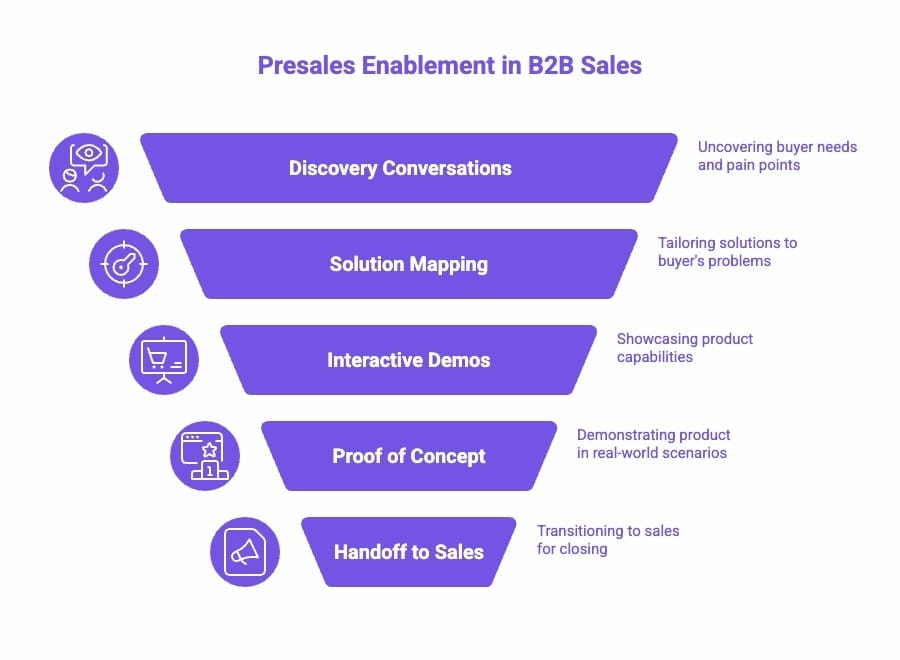
Presales enablement isn’t a one-off activity; it’s a structured process that supports every critical stage of the B2B buying funnel. Let’s break it down step by step:
1. Discovery Conversations
This is where the presales team moves beyond surface-level qualification. Instead of asking generic “budget/timeline” questions, they dig deep into:
Current workflows and pain points
Technical requirements (integrations, security, scalability)
Success metrics that matter to the buyer
How presales enablement helps: Playbooks, guided discovery templates, and industry-specific questionnaires ensure presales engineers ask the right questions that uncover value opportunities.
2. Solution Mapping
Once pain points are clear, presales professionals translate product features into a tailored solution. It’s not “here’s what our tool does” but rather “here’s how our tool fixes your specific problem.”
How presales enablement helps: Solution blueprints, case studies, and competitive battlecards allow teams to position the product effectively while differentiating from competitors.
3. Interactive Demos
This is where the magic happens. Buyers don’t just want to be told, they want to see. A personalized, scenario-driven demo builds trust faster than any pitch deck.
How presales enablement helps: Interactive demo platforms let presales teams create customized, click-through experiences with real data. Instead of overwhelming prospects with every feature, they focus on the “aha moments” that solve the buyer’s exact use case.
4. Proof of Concept (POC)
For enterprise or complex deals, a POC is often the make-or-break moment. Here, presales engineers set up a sandbox or limited deployment to prove the product works in the buyer’s real-world environment.
How presales enablement helps: Technical training, POC templates, and automation tools streamline setup, ensure consistency, and track engagement metrics to measure success.
5. Handoff to Sales for Closing
Once confidence is built, presales passes the baton back to the sales team. The buyer now has both belief (from the sales narrative) and conviction (from presales proof).
How presales enablement helps: Shared CRM notes, demo engagement data, and documented technical validations ensure nothing falls through the cracks. This smooth handoff accelerates deal velocity and reduces last-minute surprises.
What Are the Most Effective Tactics for Implementing Presales Enablement in an Organization?
Implementing presales enablement successfully requires a mix of strategy, tools, and team alignment. Here are the most effective tactics:
1. Align Presales and Sales Teams Early
Ensure presales experts and sales reps collaborate from the start. Share goals, buyer personas, and pipeline data so presales can tailor demos, POCs, and technical validations to support the sales narrative.
2. Centralize Resources and Knowledge
Create a single source of truth for product specs, battlecards, demo templates, and technical documents. This reduces wasted time searching for materials and ensures consistency across team members.
3. Use Interactive Product Walkthroughs
Enable presales teams to showcase the product with guided tours, interactive elements, and realistic scenarios. Walkthroughs improve first-time user understanding, highlight new features, and accelerate adoption rates.
4. Provide Continuous Training and Peer Coaching
Regular workshops, role-playing, and knowledge-sharing sessions help new hires and experienced team members stay sharp. Encourage feedback loops to refine demos, POCs, and discovery conversations.
5. Leverage Analytics and Insights
Track demo engagement, POC success, and buyer interactions to identify what works. Insights allow the presales team to optimize presentations, prioritize high-value opportunities, and provide valuable feedback to product and marketing teams.
6. Automate Repetitive Tasks
Use CRM integrations, proposal automation, and workflow tools to reduce manual effort. Automation lets presales focus on complex problem-solving and personalized demos instead of administrative work.
7. Standardize Templates and Playbooks
Provide standardized frameworks for discovery calls, solution mapping, and technical presentations. Templates save time, maintain quality, and help ensure every buyer receives a consistent experience.
By implementing these tactics, organizations can turn presales teams into revenue-generating engines, reduce deal cycles, and improve customer confidence and adoption rates.
What Are the Most Useful Examples of Pre-Sales Enablement Collateral and Resources?
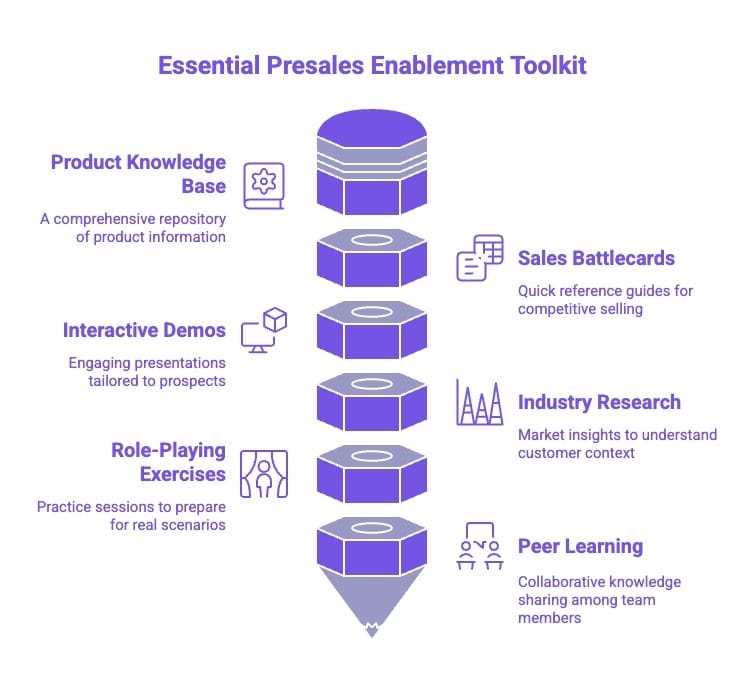
Great presales enablement runs on great resources. These are the building blocks that help your team answer tough questions, run engaging demos, and build buyer confidence. Here are some essentials every presales team should have in their toolkit:
1. Product Knowledge Base
Think of this as the single source of truth. It should include:
Product specs and technical details
User manuals and solution guides
Troubleshooting tips
With a strong knowledge base, your presales team never has to scramble for answers.
2. Sales Battlecards
A cheat sheet for competitive selling. Battlecards give quick insights on:
How you stack up against competitors
Key product differentiators
Talking points for different customer segments
When a prospect asks, “How are you better than X?”, your team has the answer in seconds.
3. Interactive Demos and Presentations
Forget generic walkthroughs. With interactive demos, presales teams can:
Highlight features that matter most
Use realistic, prospect-specific data
Create a hands-on experience
This makes buyers say, “Yes, this is exactly what we need,” instead of, “Cool product, but…”
4. Industry Research and Reports
Presales pros don’t just need product knowledge; they need context. Market reports and research help them:
Speak to industry trends
Back claims with credible data
Show prospects that they understand their world
It’s one thing to say “we solve this problem.” It’s another to show that 80% of their peers face the same challenge.
5. Role-Playing Exercises
Practice makes confident. Role-play sessions let teams:
Rehearse tough discovery questions
Sharpen storytelling
Prepare for common objections
It’s like a scrimmage before the real game, so when it counts, they’re ready.
6. Peer Learning and Coaching
Your presales team’s best mentors? Each other. Peer learning creates:
A culture of knowledge sharing
Faster onboarding for new hires
Continuous improvement for veterans
When insights flow freely, the whole team levels up.
On a related note, we’ve broken down how interactive demos are reshaping the B2B CRM experience. Check out our blog on Elevating B2B CRM Experience with SmartCue's Interactive Demo Software
What Are the Presales Software Platform That Actually Transform Chaos into Closing Power?
These aren’t just tools. They’re your game-winning playbook for predictable, scalable success. Ready to meet the 7 presales demo software that make it happen?
1. SmartCue – The Presales Demo Advantage
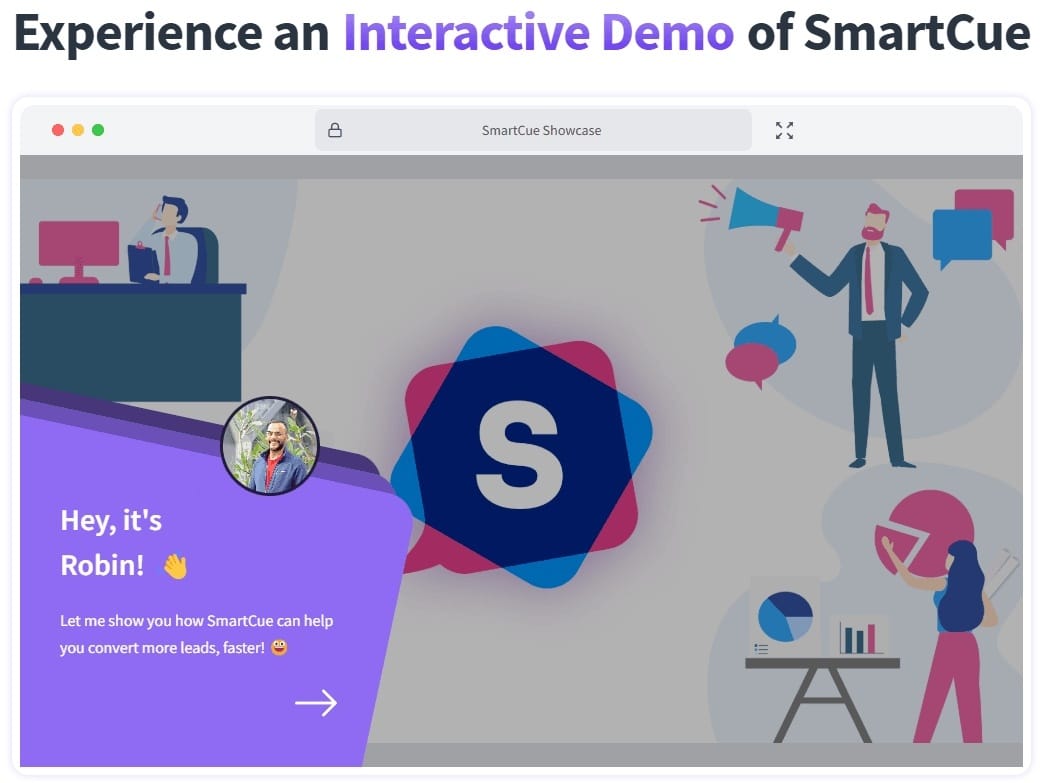
SmartCue is a no‑code presales collaboration software that helps presales teams create interactive, personalized product demos in minutes. Unlike static slide decks or time‑intensive live setups, it delivers self‑serve, data‑driven demos that engage prospects and accelerate deals.
Why SmartCue Outperforms Other Demo Tools
Fastest Time to Value: Launch a polished, interactive demo in minutes.
Actionable Insights: Analytics reveal exactly how prospects interact with demos.
Scalable Without Complexity: Supports solo reps to enterprise presales teams with ease.
What Users Say
Consistently rated 4.8★ on Product Hunt and 4.9 ★ G2 for speed, simplicity, and versatility.
Teams report creating first demos within minutes, replacing lengthy live prep cycles.
Adopted easily across sales, presales, marketing, and customer success teams.
If your team is still juggling clunky slides and scattered demo environments, SmartCue is the fastest way to turn presales chaos into polished, revenue‑ready demos.
Try it free for two weeks and see the difference before your next pitch.
Pricing:
Free trial - 14-day test period for teams to try their hands at, no commitments.
Essential – $99/user/year → Unlimited users, 1,000 views, core features + 500 AI credits to get you started.
Growth – $300/user/year → Unlimited users & views, advanced analytics, private links, full role-based access, and more AI power.
Enterprise – Custom → Min. 10 users, 10,000 credits, enterprise-grade security, AI analytics, and custom integrations.
2. Salesforce CRM: Cutting-edge Solution for Lead Management
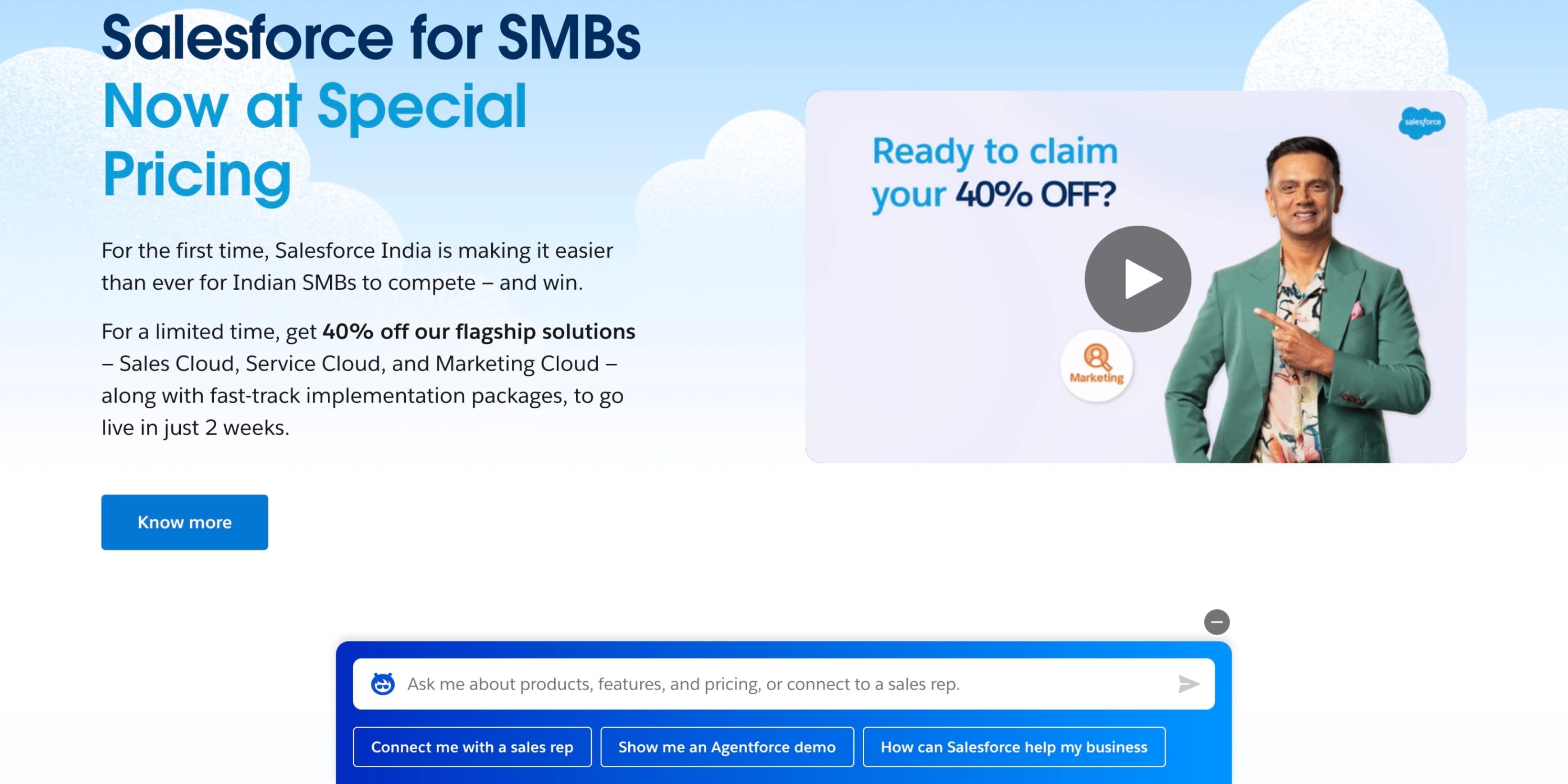
Salesforce is the industry‑leading CRM that keeps every lead, interaction, and opportunity organized in one place. It empowers presales teams to track engagement, automate workflows, and forecast deals with precision. With real‑time dashboards and deep analytics, it turns messy pipelines into actionable strategies.
Why Salesforce is a Good Choice:
Highly customizable for any industry or workflow
Robust analytics and sales forecasting
Extensive third‑party integrations
What To Look Out For:
Steep learning curve for new users
High cost, especially for smaller teams
Pricing:
Starter Suite – $25/user/month → Simple CRM with sales, service & marketing essentials: leads, accounts, contacts, opportunities, plus email integration.
Pro Suite – $100/user/month → Advanced CRM with forecasting, customizable dashboards, quoting & contracting, and expanded marketing + commerce tools.
Enterprise – $165/user/month → Full-featured CRM with advanced pipeline management, deal insights, conversation intelligence, Agentforce, and web API flexibility.
3. PandaDoc: For Automating the Proposal Lifecycle
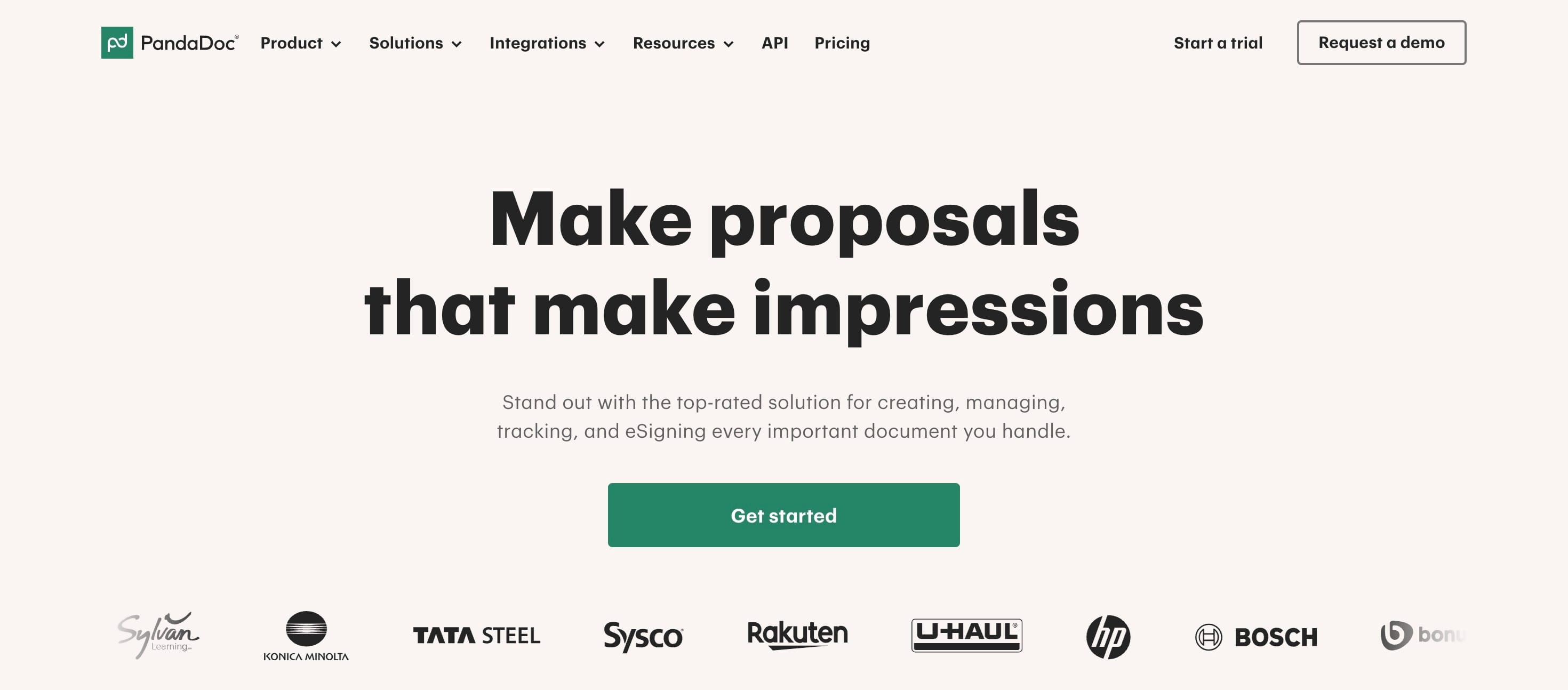
PandaDoc streamlines proposal creation, approvals, and e‑signatures so your presales team can focus on selling instead of formatting. With customizable templates, pricing tables, and real‑time document tracking, it shortens the sales cycle and boosts professionalism.
Why PandaDoc is a Good Choice:
Automates proposal creation and approvals
Built‑in e‑signature and document tracking
Easy integration with CRMs and payment platforms
What To Look Out For:
Limited offline functionality
Template customization can feel restrictive
Pricing:
Starter – $19/seat/month
→ Unlimited docs & e-signatures, drag-and-drop editor, real-time tracking, and 24/7 support.
Business – $49/seat/month → Everything in Starter + CRM integrations, custom branding, deal rooms, approval workflows, bulk send, and web forms.
Enterprise – Custom pricing → Everything in Business + CPQ, workflow automation, SSO, API access, notary, and team workspaces.
4. ZoomInfo: For Prospecting and Creating Targeted Outreach
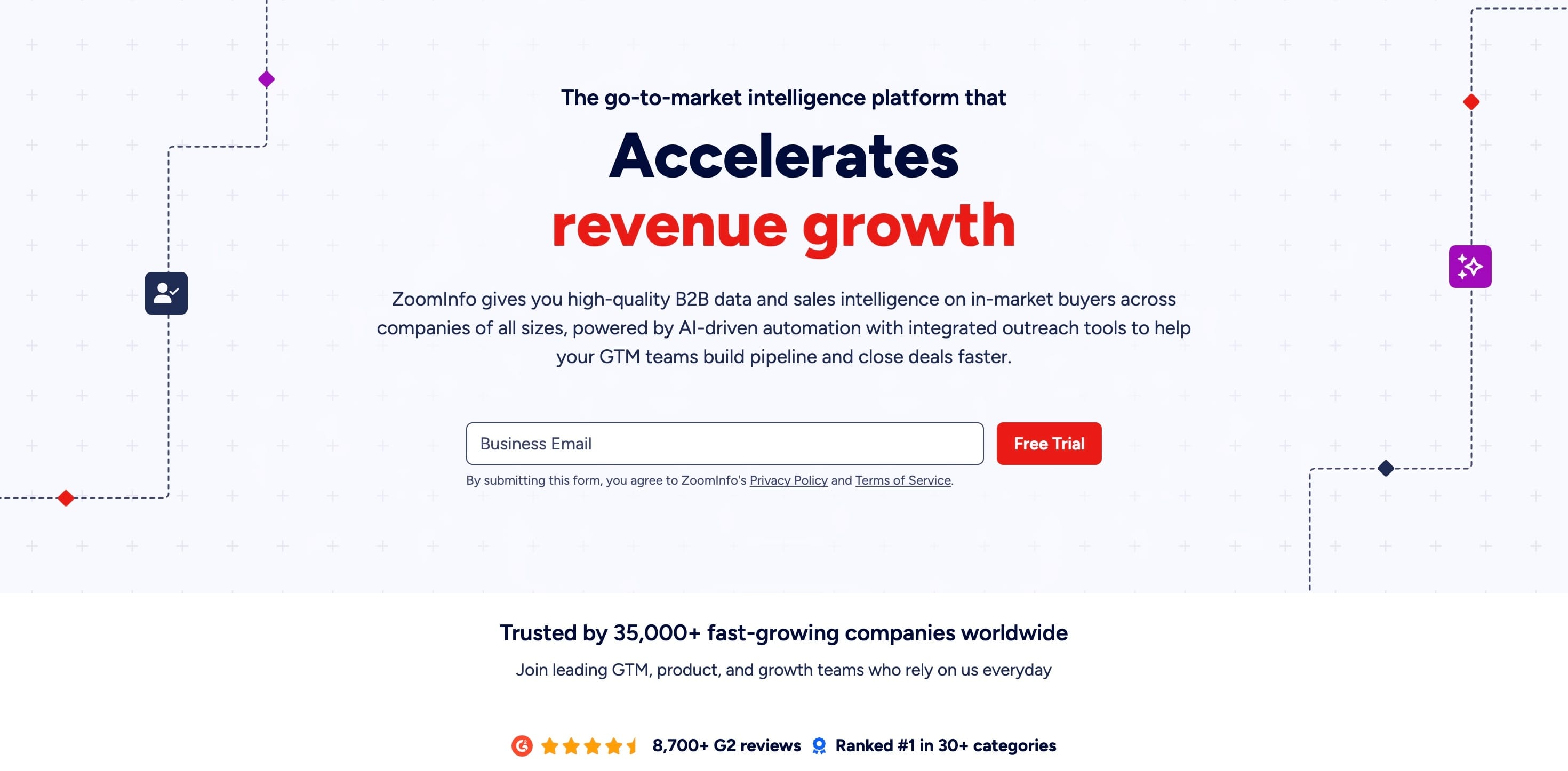
ZoomInfo gives presales teams instant access to verified B2B contact and company data, plus buying intent insights. It enables smarter targeting, personalized outreach, and faster pipeline growth by ensuring you focus only on high‑potential leads.
Why ZoomInfo Is a Good Choice:
Massive, accurate database of decision‑makers
Strong sales intelligence and lead‑scoring tools
Integrates seamlessly with popular CRMs
What To Look Out For:
Expensive for small teams
Some data can be outdated or incomplete
Pricing:
Free trial available for teams to test out commitment-free.
Sales → Custom pricing; Provides verified email addresses, direct dials, mobile numbers, company insights, buying intent signals, and engagement integrations.
Marketing → Custom pricing; Includes contact data, company insights, digital marketing tools (display ads, website chat, form management), and flexible integrations.
Talent → Custom pricing; Offers advanced candidate search, sourcing intelligence with alerts and company updates, along with engagement integrations.
5. Vivun- For AI-driven Sales Acceleration
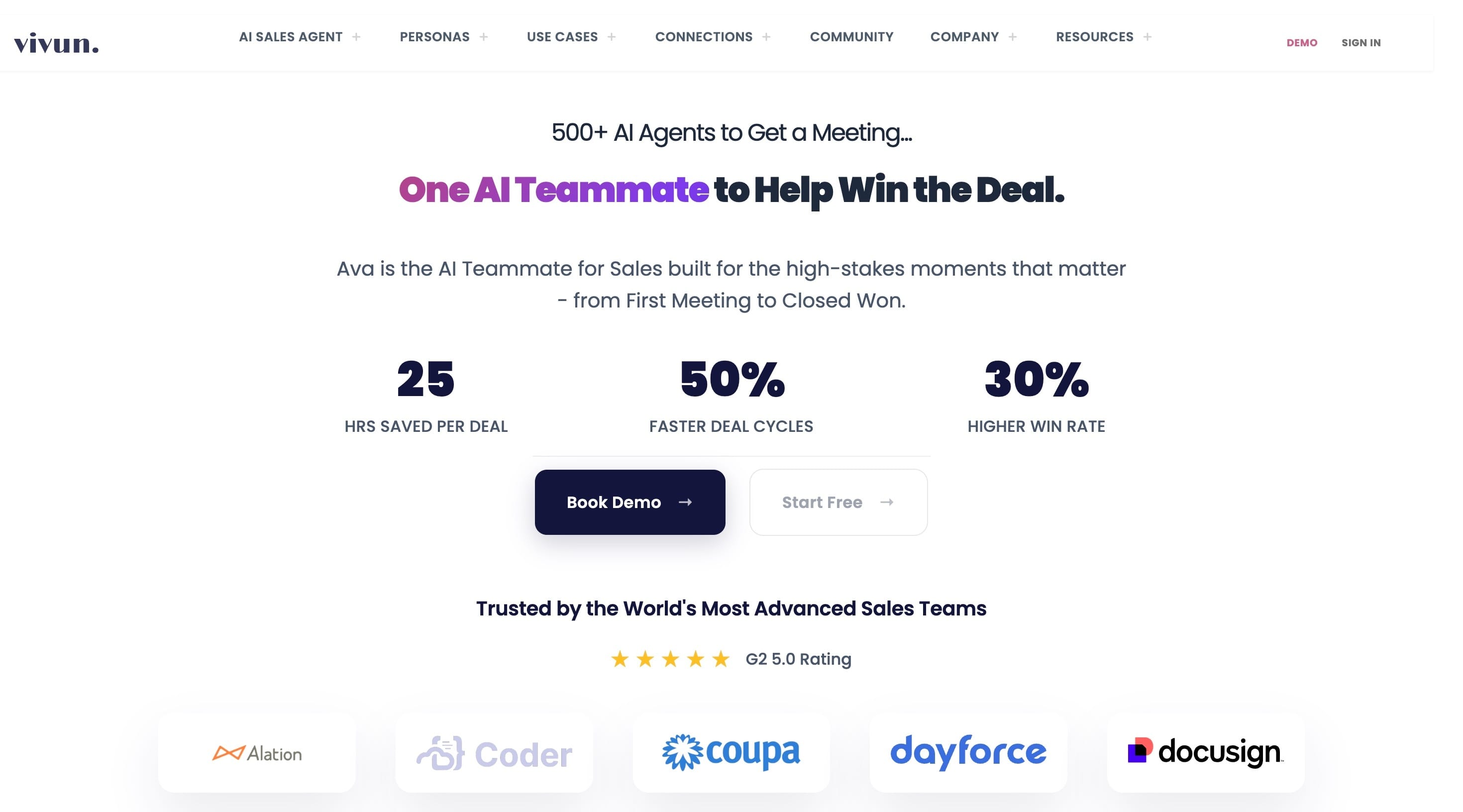
Vivun is an AI‑powered platform that elevates presales from support to strategy. It optimizes deal prioritization, capacity planning, and product alignment, helping teams close high‑value opportunities faster.
Why Vivun Is a Good Choice:
Hero Score quantifies presales impact on revenue
AI insights improve deal prioritization and resource allocation
Strengthens collaboration between sales, presales, and product teams
What To Look Out For:
Higher cost may challenge smaller teams
Requires change management to fully leverage features
Pricing:
Free → Up to 5 spaces, limited call participation, chat and voice interactions with Ava, basic avatar, and standard connections.
Enterprise → Custom Pricing, Unlimited spaces, usage-based call participation and voice/chat with Ava, advanced avatar, 3rd-party connections, plus standard and custom accelerators.
6. Saleo- For Incorporating Overlays Into Your Live Product
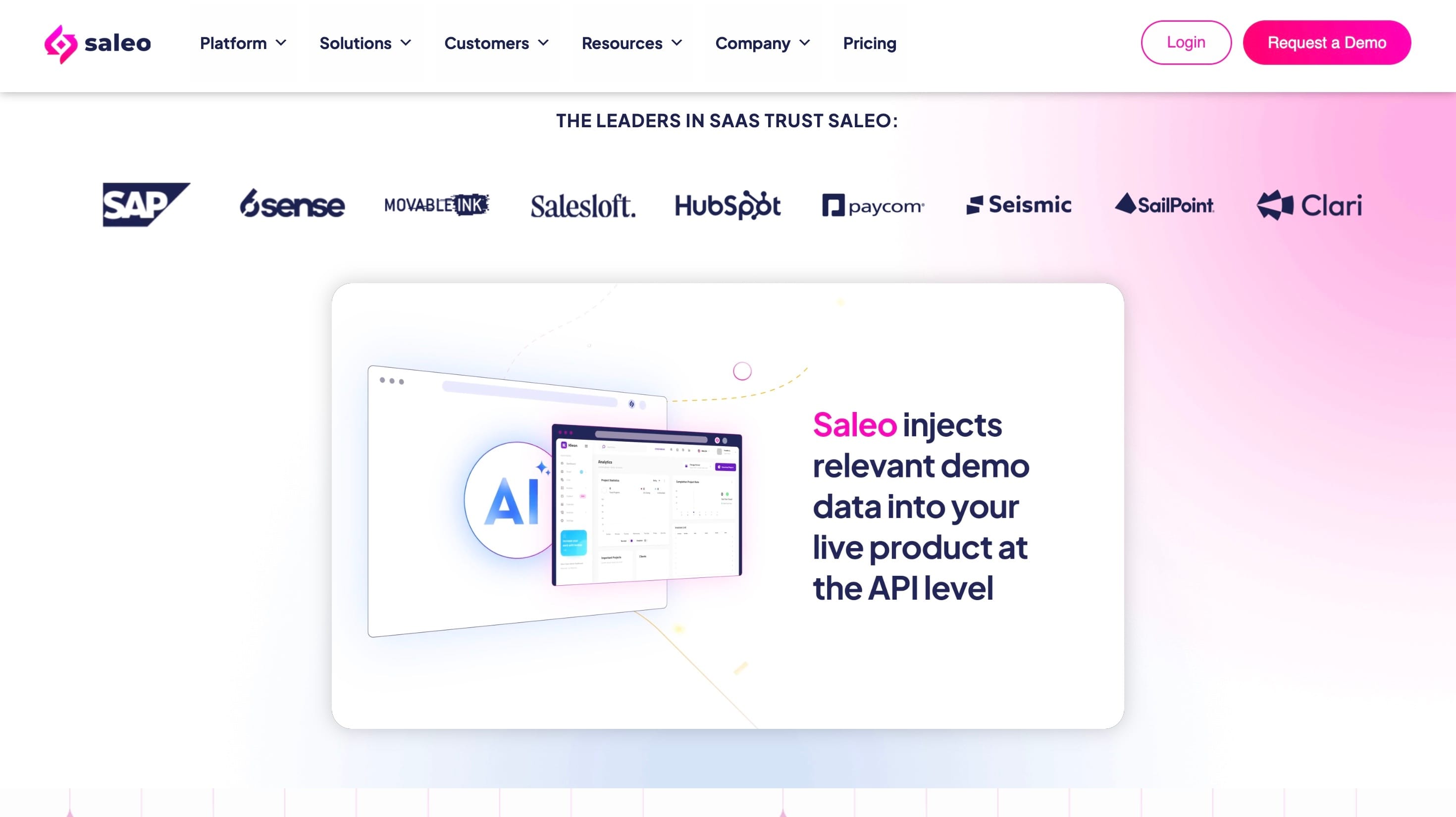
Saleo lets you deliver fully personalized, data‑rich live demos using your real product. By adding interactive overlays and controlling the data shown, it turns every demo into a polished, conversion‑ready experience.
Why Saleo Is a Good Choice:
Creates authentic, customizable live demos
Full control over demo data for security and accuracy
Eliminates the need for multiple demo environments
What To Look Out For:
Initial setup and integration can be time‑intensive
Learning curve for non‑technical team members.
Pricing:
Saleo does not publish its pricing publicly. Costs are typically customized based on team size, use cases, and feature requirements.
7. Mailsuite: For Monitoring Email Engagement
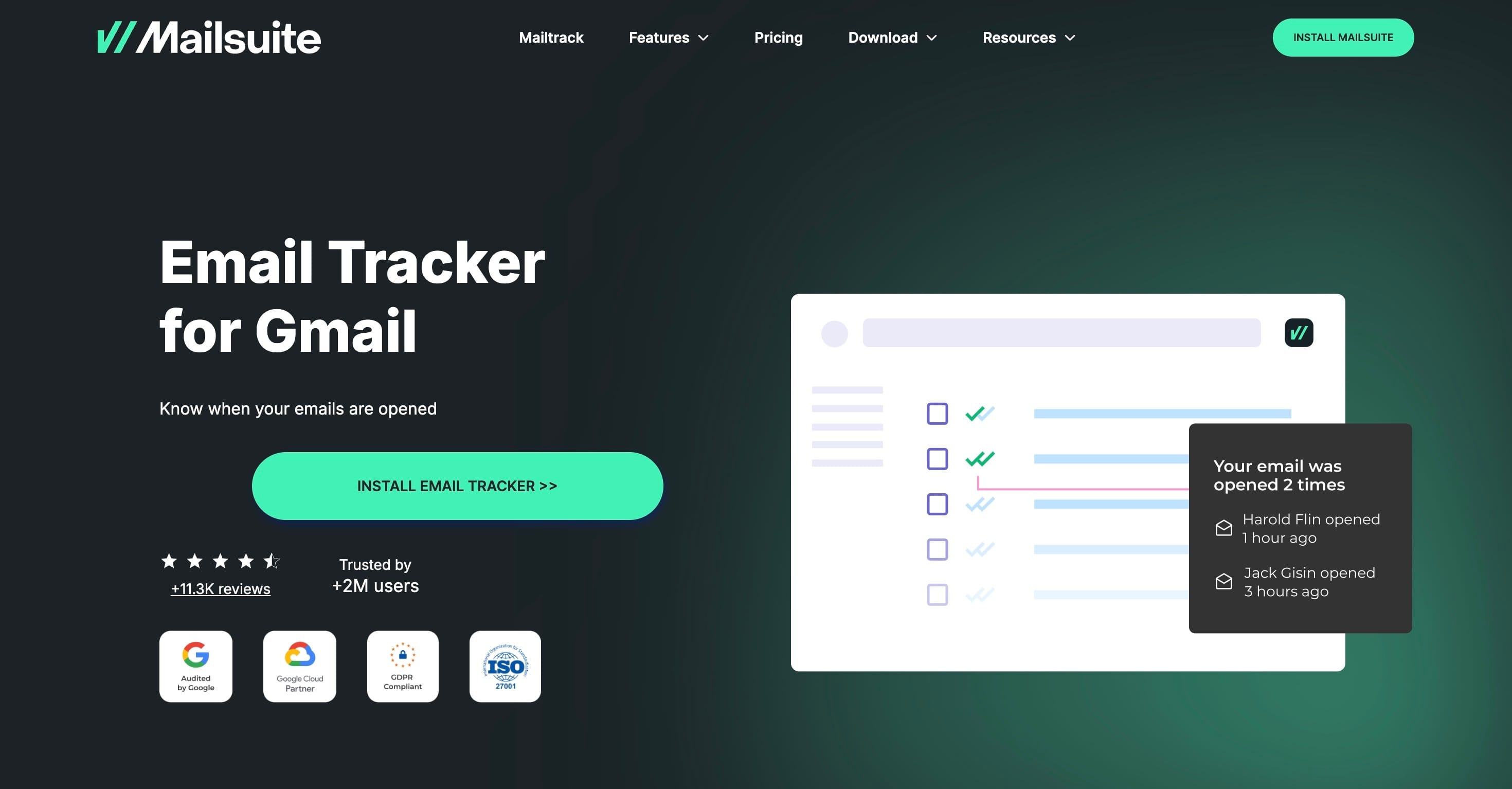
Mailsuite tracks opens, clicks, and replies so your presales team knows exactly when leads engage. With this insight, you can time follow‑ups perfectly and prioritize prospects who are ready to move.
Why Mailsuite Is a Good Choice:
Real‑time tracking for opens, clicks, and replies
Enhances lead prioritization and follow‑up timing
Easy integration with popular CRMs
What To Look Out For:
Limited A/B testing features
Can be costly for smaller teams
Pricing:
Free – $0/user/month → Unlimited tracking, real-time desktop notifications, email alerts, and daily reports.
Advanced – $9.99/user/month → Adds group email tracking, full tracking history, link click tracking, campaigns (up to 60,000 emails/month), unlimited document uploads & e-signatures, plus priority support.
Conclusion
Think about the last time you almost bought something big, software, a car, maybe even a house. Did the glossy brochure close the deal for you? Probably not. What sealed it was when someone showed you exactly how it would fit your life.
That’s presales enablement.
The moment when a buyer goes from “sounds nice” to “this is it.” And here’s the wild part: most companies still treat it like an afterthought. They polish their sales pitch, but they forget to give their presales team the stage, the script, and the spotlight.
Presales enablement isn’t paperwork. It’s not “extra training.” It’s the art of turning your product from a set of features into a story the buyer can see themselves in. Do it well, and sales stop being persuasion; it becomes inevitability.
So here’s the challenge: are you empowering your presales team to deliver those aha moments… or are you still hoping a pitch deck can do the heavy lifting?
Because the companies that figure this out first? They’re the ones buyers will stop considering and start choosing.
Frequently Asked Questions
What are the main benefits of implementing presales enablement in a company?
Effective presales enablement tools shorten sales cycle length, improve product demonstrations, and generate more qualified leads by aligning sales professionals, subject matter experts, and product marketing to address specific needs at the right time.
What are common challenges companies face with presales enablement?
Challenges include handling complex web of technology, answering detailed technical questions, choosing the right tools, and ensuring new team members quickly learn common use cases within the presales process.
What types of assets or resources are typically used in pre sales enablement?
Enablement tools often include interactive product demos, market research reports, battlecards, demo formats, and technical information that help technical sales teams showcase product capabilities clearly and persuasively.
How can a business optimize its technical presales enablement process?
A business can drive presales success with an effective presales strategy, sales automation, enablement programs, and a collaborative environment where subject matter experts and sales professionals deliver their best work.
Are there any best practices for rolling out presales enablement to teams?
Best presales practices include training new team members, tailoring enablement tools to specific needs, encouraging peer coaching, and aligning enablement programs with each stage of the sales cycle.
Why should product managers invest in sales enablement?
Product managers have good reason: enablement tools help communicate new features, reduce demo requests complexity, and ensure the entire sales organization can deliver effective presales enablement at scale.
Which demo behaviors mirror the early signals your best customers showed during their evaluation process?
High-value behaviors include exploring common use cases, requesting interactive product demos, testing free trial workflows, and asking detailed technical questions about product capabilities early in the initial stage of the sales cycle.
Where do high-intent prospects spend their time?
High-intent prospects usually spend time reviewing market research, exploring demo formats, watching product demonstrations, engaging with product marketing content, and speaking with technical sales teams at the right stage of the sales cycle.
What are the essential tools and assets every company needs for successful presales enablement?
Tools like SmartCue are a no‑code presales collaboration software that helps presales teams create interactive, personalized product demos in minutes. More tools include Salesforce, Saleo, LinkedIn navigator.
